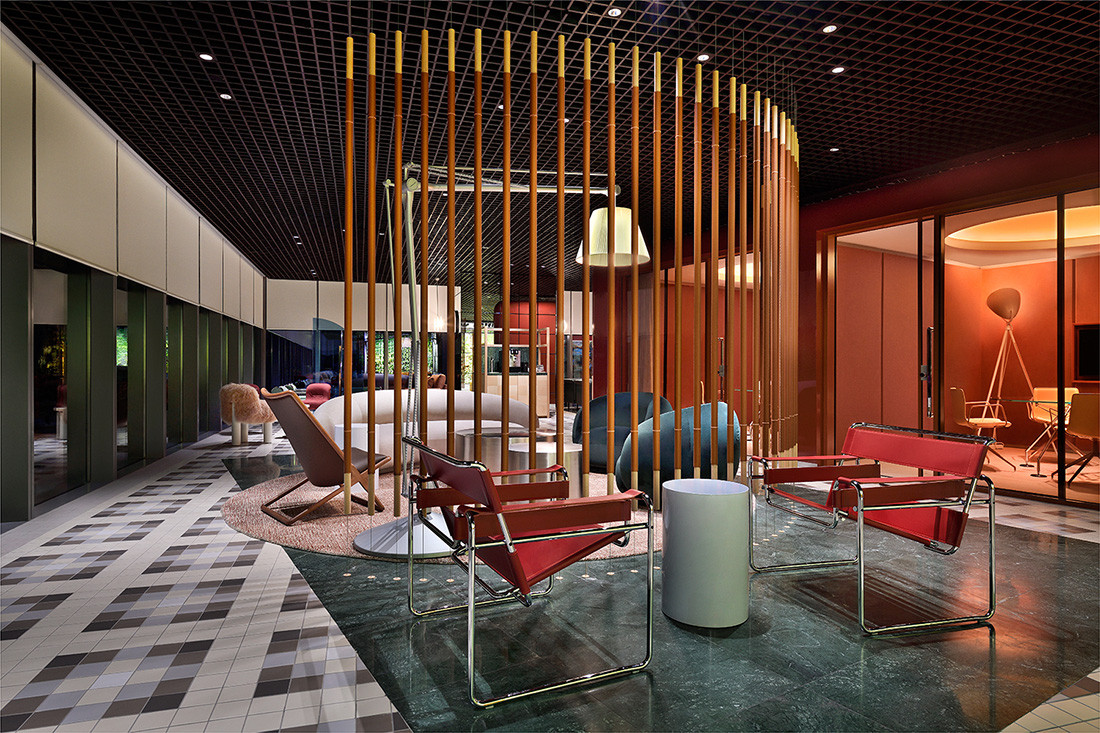The onus is on architects and designers to create places and spaces that are suitably fit for purpose, even if final say over a project’s FF&E schedule is not.

Treasury Wine Estates, designed by Carr | Photography by Earl Carter
October 1st, 2020
“We require from buildings two kinds of goodness: first, that they perform their practical duty well; secondly, that they be graceful and pleasing in doing it” — the 19th-century visionary, John Ruskin, said it first. Then the modernists deduced the notion into the perennially popular motto, ‘form follows function’; and we learned that function follows fit for purpose.
Fit for purpose specifying is one of the rudiments of modern commercial architecture and one that, traditionally, has been the duty of architects and designers to achieve. But these days, to use the words of Mark Swanton, owner and founder of KE-ZU, it’s become “a minefield subject,” that, in recent years, seems to have taken a turn for the worse.
If form follows function; function follows fit for purpose
Mark is not the only one who has been observing the downward slide in the use of fit for purpose ff&e. In fact, his concerns are shared by Richard Munao, founder and managing director for Cult; Yosi Tal, managing director for Designer Rugs; and Anthony Collins, managing director for Stylecraft — to name just a few. To these leading suppliers of high quality, design-led products, it’s clear as day how, where and why projects might be falling short of fit for purpose.
“When I started in this industry some 35 years ago, architects and designers specified products that were fit for purpose and the specification remained unchanged as they controlled the projects,” says Swanton, “these days, it all comes down to money.” Evidently, project ‘power dynamics’ have certainly shifted in recent years and ff&e specification is no longer guaranteed safe and sound in the hands of the design practices. Rather, substitutions are being made at the whim of short-sighted objectives, by stakeholders with little-to-no know-how and experience with what deems what products fit for what purpose.
To the untrained eye, sure, replica products might appear to be ‘same-same, but different’, but whatever savings are made come at a cost — “usually because they don’t come with anything more than the statutory 12 month warranty, do not have local AFRDI strength and durability or GECA environmental certification,” says Swanton.

The Work Project – Asia Square, designed by Hassell | Photography by ekyap
“It’s easy to buy and sell,” says Richard Munao, founder and managing director of Cult, “but what happens if it’s not fit for purpose?” Anecdotally he adds, “I got caught out myself just recently — I saw this fantastic looking pair of pants on Instagram and ordered them, without doing any research, and what arrived didn’t even have a button hole.” Faux pas like these are, no doubt, relatable to us all; but when the context is not a matter of personal shopping, rather the stools for a hot new bar, the rug for a busy hotel foyer or the chairs for an executive boardroom, they suddenly bear far more foreboding weight.
It’s evident that the matter of delivering projects that are fit for purpose, particularly in commercial settings, requires immediate and concerted attention. Specced with suitably fit for purpose products and materials, projects enjoy greater longevity and no superfluous waste, making it as much about building sustainably as it is about upholding architecture’s professional integrity — and therefore the entire design/build team’s concern. For whoever has the final call on a project’s ff&e, the most sound advice is always to “do your research, consult with and trust the experts.”
A searchable and comprehensive guide for specifying leading products and their suppliers
Keep up to date with the latest and greatest from our industry BFF's!

XTRA celebrates the distinctive and unexpected work of Magis in their Singapore showroom.

With the exceptional 200 Series Fridge Freezer, Gaggenau once again transforms the simple, everyday act of food preservation into an extraordinary, creative and sensory experience, turning the kitchen space into an inspiring culinary atelier.

Open, light-filled and speaking directly to contemporary Australian culture, the new Bates Smart-designed Australian Embassy in Washington DC is positioning Australia at the forefront of contemporary design.

Designer Rugs proudly presents the ‘Gardens of Andalucia’ collection, a new range crafted by the revered boutique design studio, House of Heras.
The internet never sleeps! Here's the stuff you might have missed

New forms and patterns have taken shape in the latest acoustic panels from Woven Image – bringing together cutting-edge design to create an immersive, sensorial product.

The reimagined format of ORGATEC for 2024 has reinvigorated the world’s leading trade fair for workplace design, resulting in the most successful edition to date. Read on to discover highlights and new trends from ORGATEC 2024.